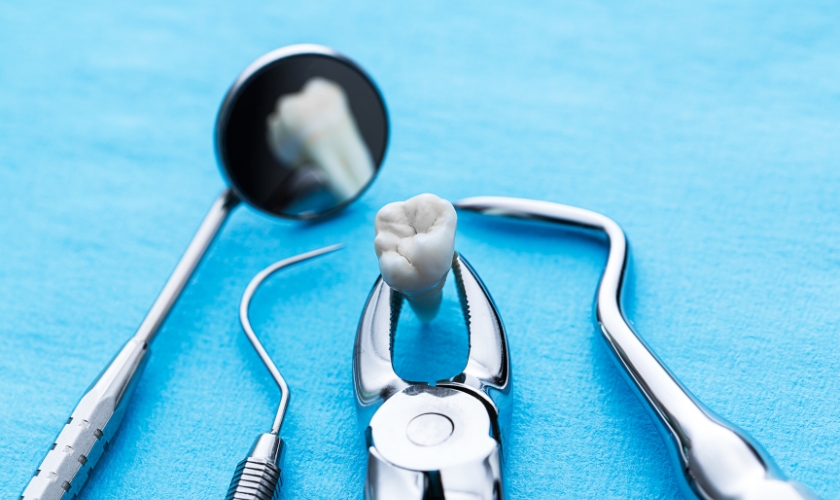
Tooth extraction is one of the most dreaded and most performed oral surgeries. Studies show every year nearly ten million molars are extracted. This number expands up to 2x when all the tooth extractions are combined.
Tooth removal can bring much-needed relief, but it’s common to quiver while discussing it. While you may not feel pain during the treatment, the pain one will experience during healing cannot be prevised.
Pain after a tooth extraction varies from person to person. Factors like the complexity of the procedure and how an individual’s body reacts to the surgery decide the time required for healing after tooth extraction. However, the healing can be simple when the patient is aware of what to expect and how to manage the discomfort. Let’s join the conversation:
What to Expect After a Tooth Extraction?
It’s the most crucial period after tooth extractions in Dallas, TX when pain usually peaks. The first 24-48 hours can be excruciating. But the pain gradually subsides with care and patience. The patient might experience mild discomfort for a week, but it’s easy to manage.
- First 24 Hours – Swelling, bleeding, and discomfort remain consistent. Pain medication and cold compresses can help reduce swelling and give the patient mild relief from the throbbing pain.
- Days 2-3 – The intensity of pain decreases with the ongoing care and medicines. However, the extraction site might feel sensitive.
- Days 4-7 – Most pain fades, but mild soreness may persist.
- Weeks 2-3 – As time passes by, discomfort becomes minimal. The patient might notice healing of the gum tissue.
- One Month Later – The healing might be ongoing, but most patients usually get back to their normal routine.
Factors That Affect Pain Duration
The time required for healing after tooth extraction can extend based on factors such as:
- Complexity of Extraction – It’s not an alien fact that simple extractions heal faster than surgical teeth removals.
- Age and Health Condition – Younger individuals and those in good health recover faster compared to older adults.
- Smoking and Alcohol – These slow down your healing and can make your post-operation pain intense.
- Dry Socket – If you smoke or use straws during the healing journey, you risk dislodging the blood clot that helps in healing. Aftermath? Severe pain that may last more than a week.
- Oral Hygiene – Proper oral care reduces the risk of infections when you’re healing from the surgery wound.
How to Manage Pain Effectively?
The best tips for pain relief post-extraction and quick recovery are:
- Over-the-counter medications like ibuprofen or acetaminophen
- Applying ice packs on the cheek reduces jaw/gum swelling
- Eating soft foods like soup, broth, yogurt or applesauce prevents irritation at the extraction site.
- Sucking motions to use a straw can dislodge the clot and cause a dry socket.
- Gentle rinsing with salt water keeps bacteria at bay.
Pain after tooth extraction is temporary and manageable with the right care. Most people experience peak discomfort within the first two days, with gradual relief over a week. Proper aftercare minimizes pain and accelerates healing. If pain worsens or persists beyond the normal recovery timeline, seek professional advice.



